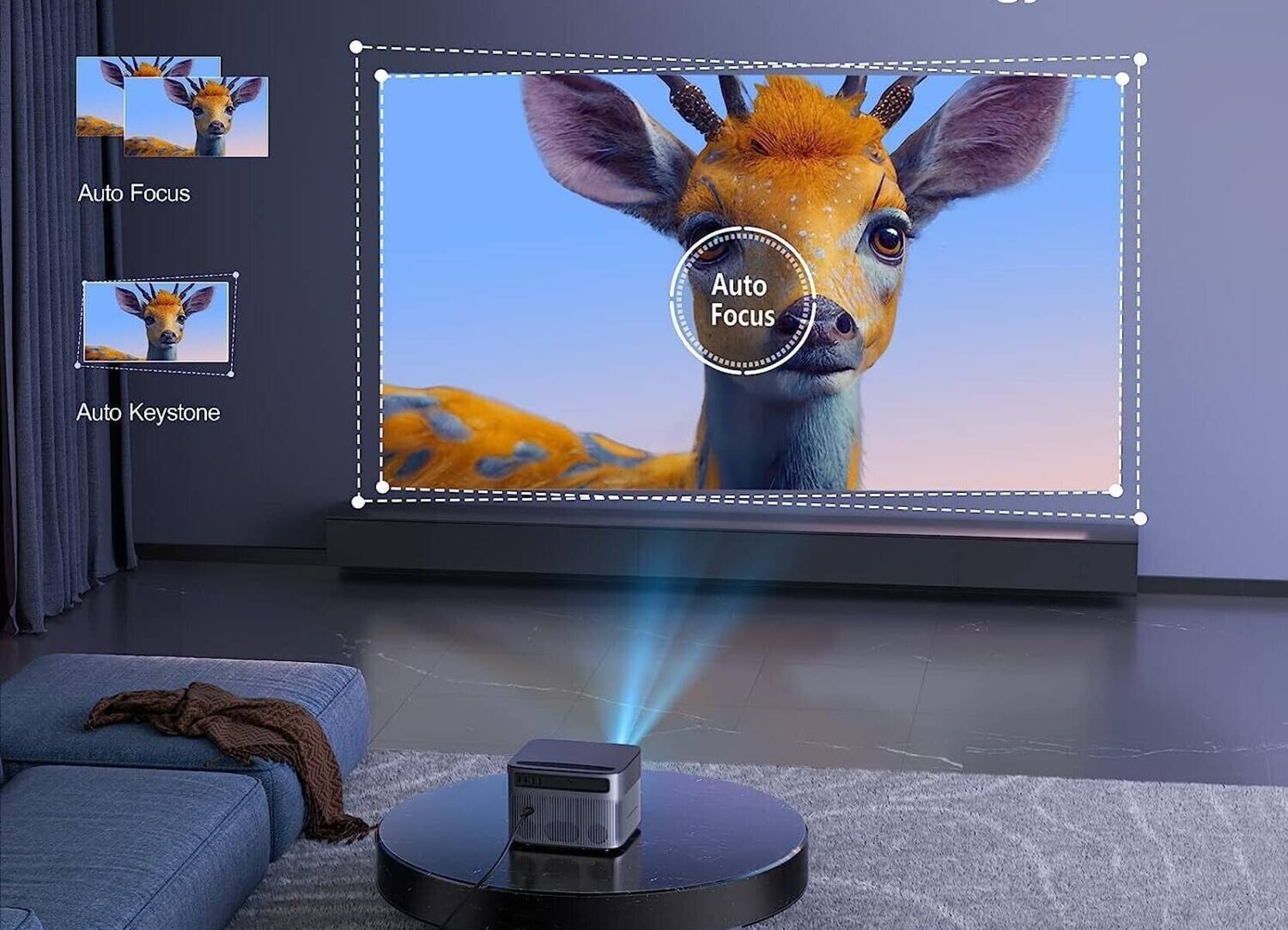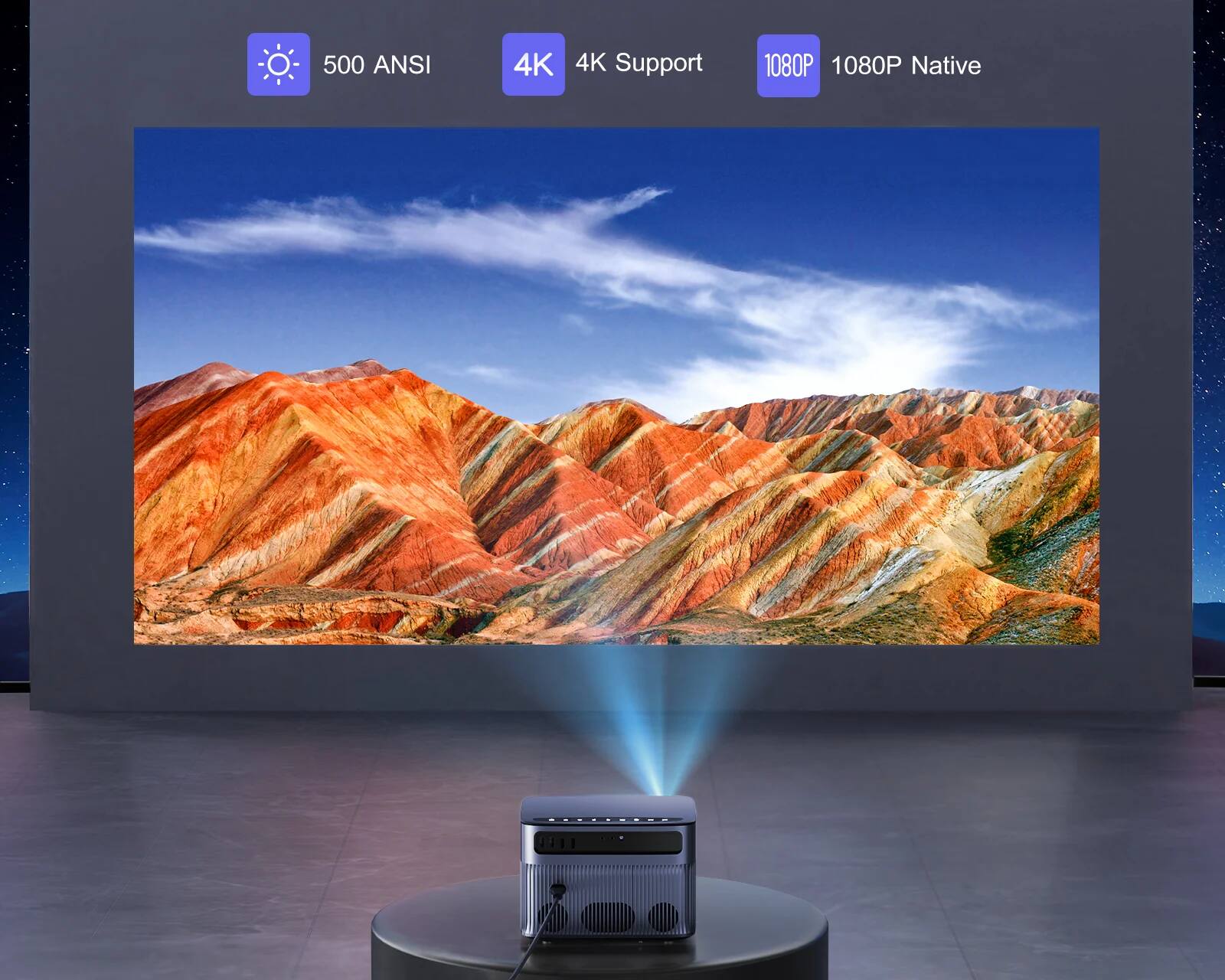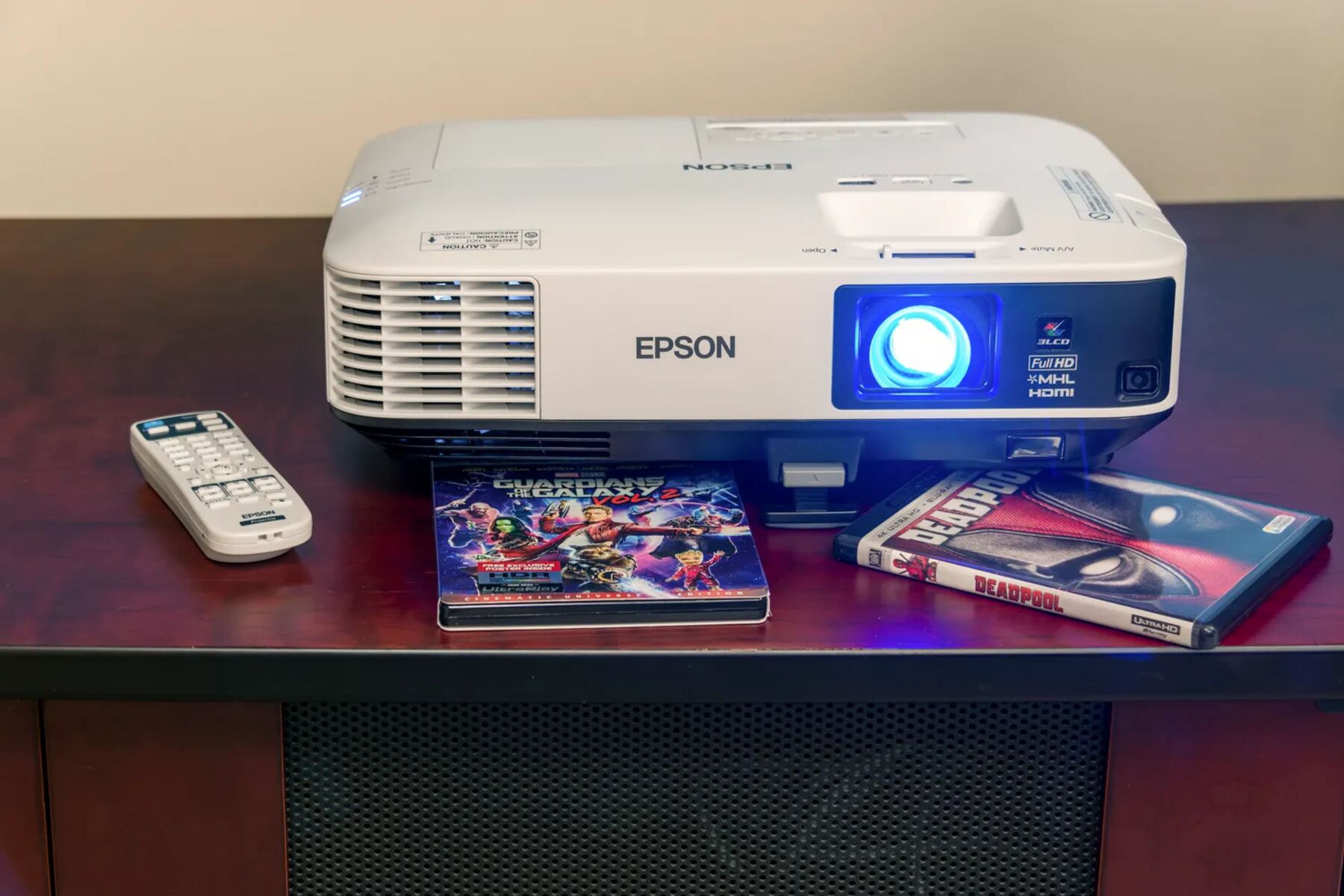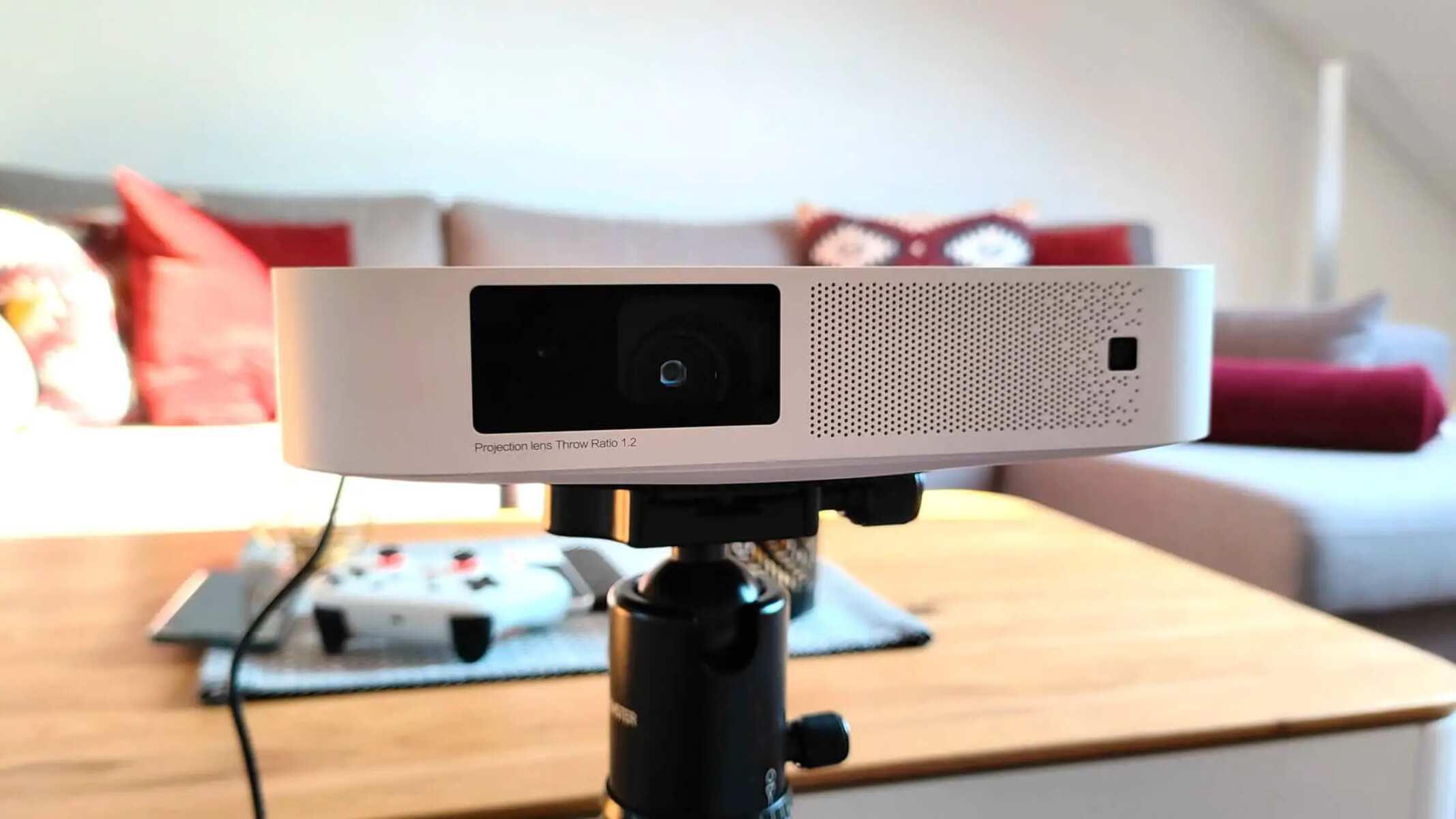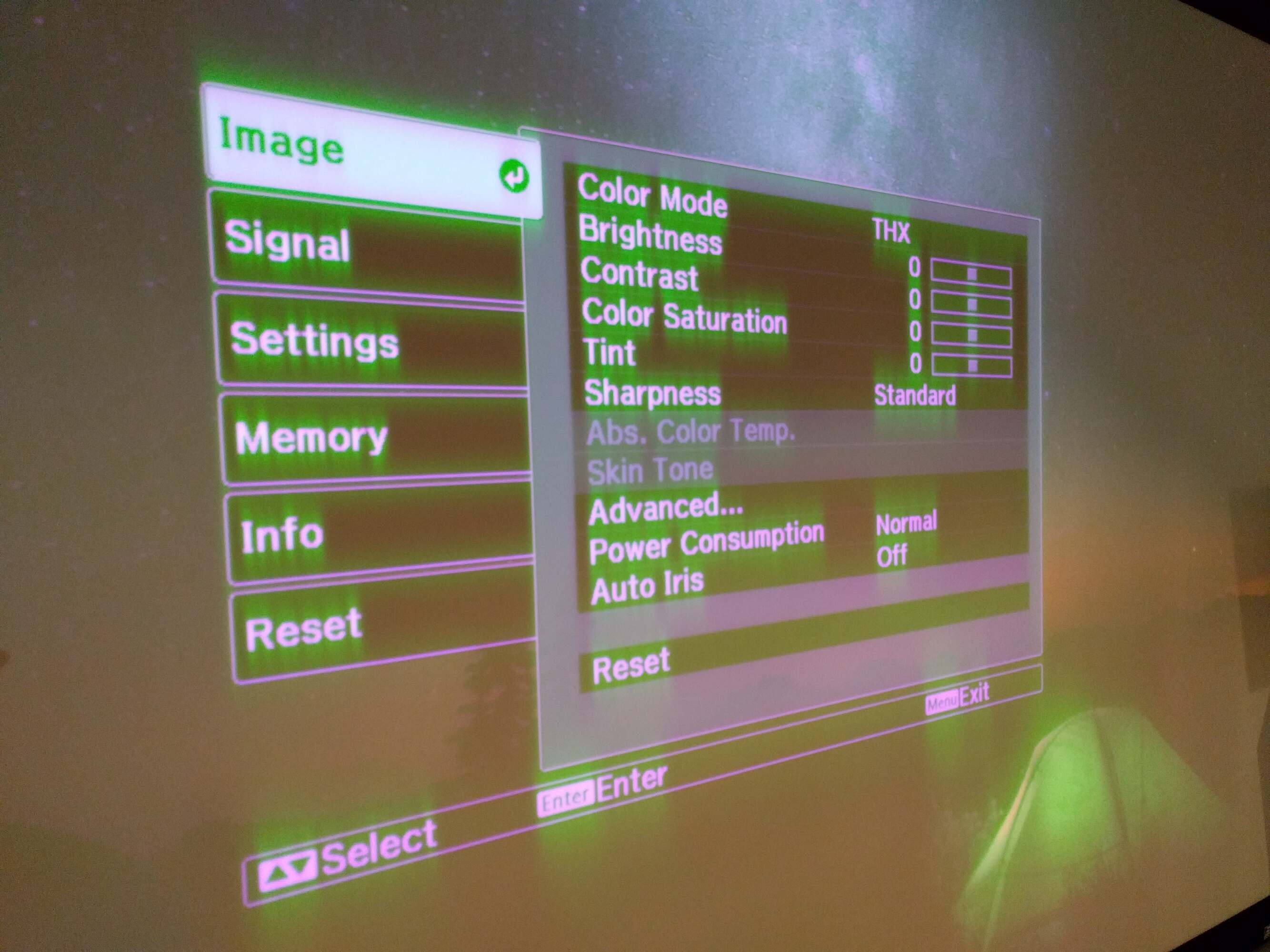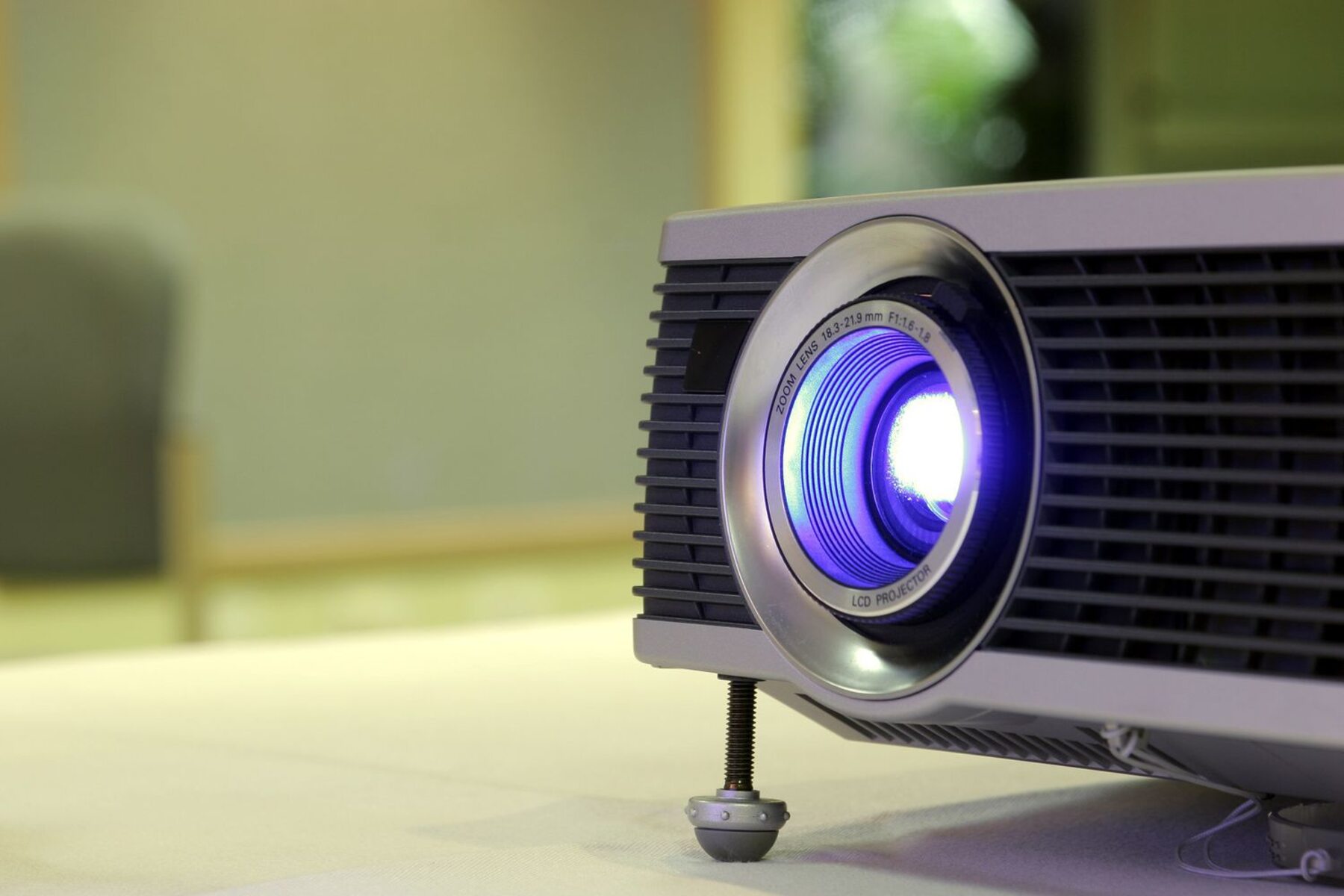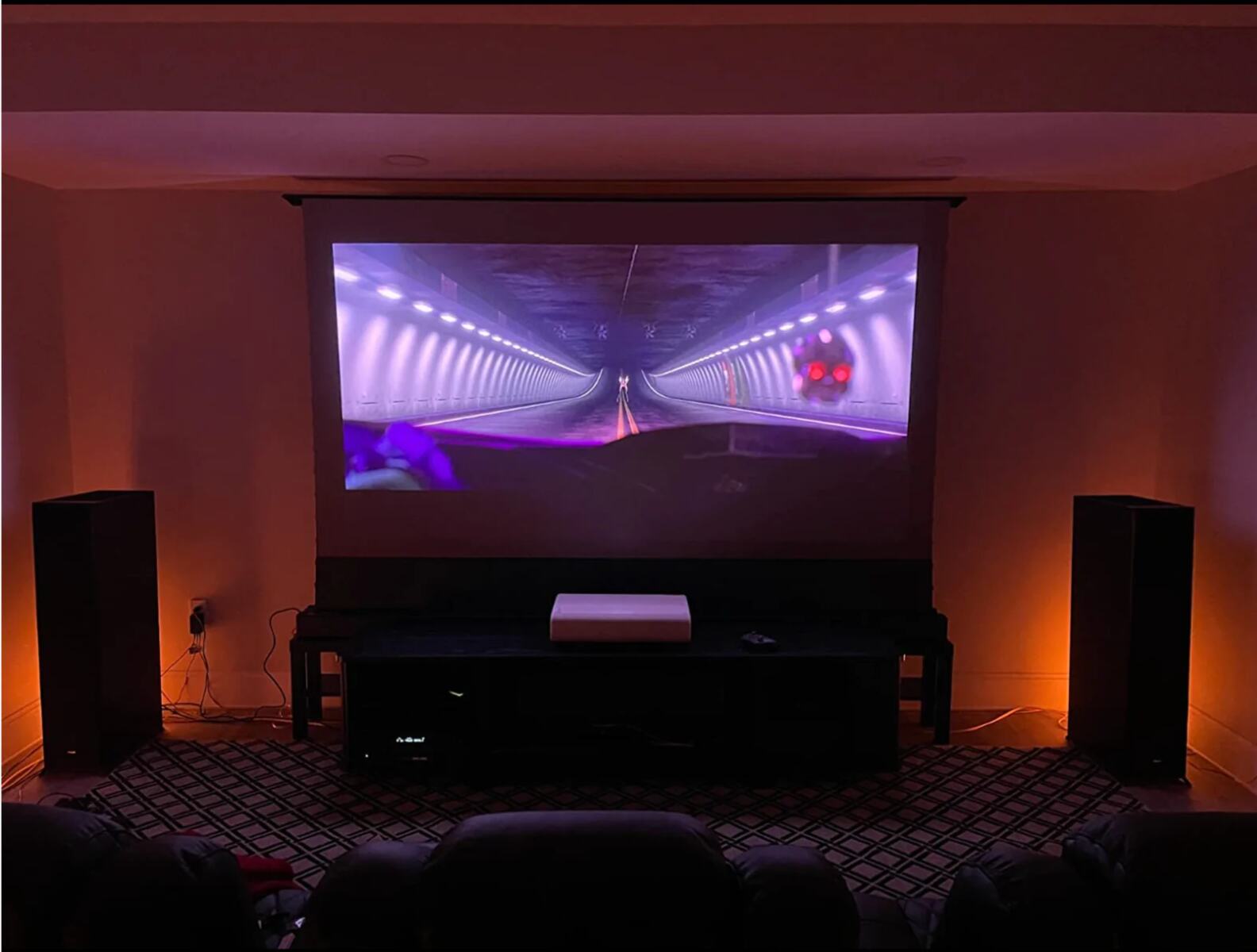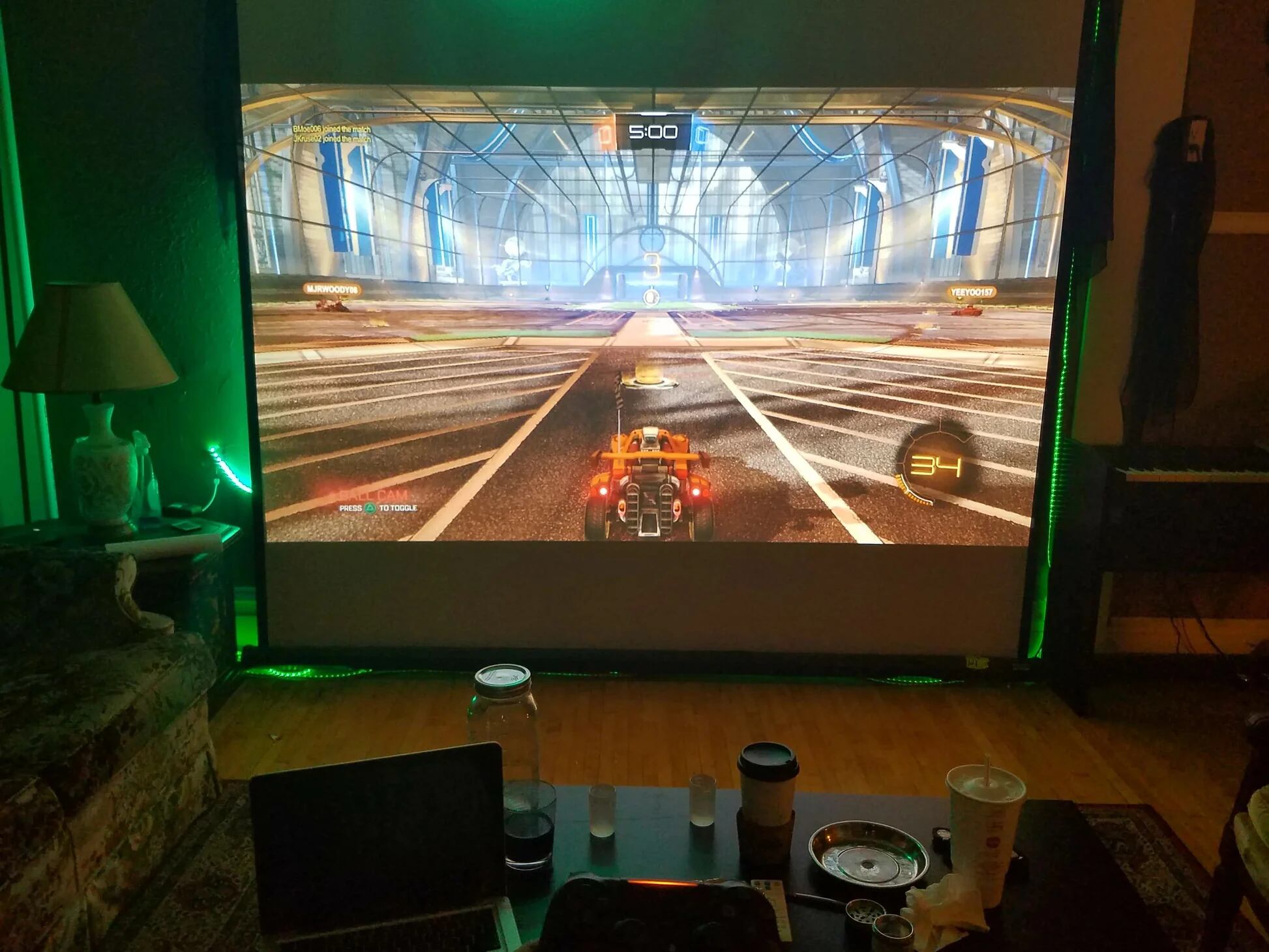Introduction
Welcome to the world of projectors, where technology brings your presentations, movies, and games to life on a big screen. If you’ve ever used a projector, you may have come across the term “keystone.” But what exactly is keystone, and why is it important?
A keystone in a projector refers to the distortion that occurs when the image projected onto a screen appears wider at the top or bottom, the sides, or both. This distortion is caused by the projector’s angle not being aligned perfectly with the screen. When the projected image is not rectangular but rather trapezoidal or distorted, it affects the overall visual quality and readability of the content.
Keystone correction is the solution to this problem. It is a feature available in most modern projectors that allows you to adjust the image shape digitally to correct the keystone distortion. By applying keystone correction, you can make the projected image appear rectangular and true to its original proportions, regardless of the projection angle.
Keystone correction is particularly important in situations where the projector cannot be placed directly in front of the screen or when the screen itself is not perfectly aligned. Think about scenarios where you are presenting in a small room with limited space or projecting onto a makeshift surface. Without keystone correction, the projected image would look skewed, making it difficult for the audience to follow your content.
The good news is that keystone correction can help you achieve a professional and distortion-free projected image without having to compromise on the placement or alignment of your projector. Whether you are using a projector for business presentations, educational purposes, or home entertainment, knowing how to utilize keystone correction effectively is essential for delivering a visually pleasing experience.
In the following sections, we will dive deeper into how keystone correction works, the different types of keystone correction available, and some tips for using this feature successfully.
What is a keystone in a projector?
A keystone in a projector refers to the distortion that occurs when the image projected onto a screen appears wider at the top or bottom, the sides, or both. This distortion is caused when the projector’s angle is not aligned perfectly with the screen. The name “keystone” comes from the shape created by the image, resembling the top of a stone arch.
Imagine you are setting up a projector for a presentation. You have positioned the projector off-center or at an angle, but you want the projected image to appear perfectly rectangular on the screen. If you do not correct the keystone distortion, the image will appear trapezoidal or distorted, impacting the overall visual quality and readability of the content.
Keystone correction is a feature that helps to digitally adjust the shape of the projected image to correct the keystone distortion. It allows you to make the image appear rectangular and true to its actual proportions, regardless of the projection angle or placement of the projector. By manipulating the image digitally, keystone correction helps to ensure that your presentations, movies, or games are displayed accurately and clearly on the screen.
The keystone effect can occur when the projector is placed too high or too low compared to the screen. When the projector is positioned below the screen, the image will be wider at the top, creating a “keystone” shape. Conversely, when the projector is positioned above the screen, the image will be wider at the bottom. The keystone distortion can also occur when the projector is placed off to the side, resulting in a trapezoidal image shape.
Keystone correction is an essential feature, particularly in situations where it is challenging to position the projector directly in front of the screen or when the screen itself is not perfectly aligned. It allows you to overcome the limitations of the physical setup and still achieve a properly proportioned and well-aligned image on the screen.
In the next section, we will explore why keystone correction is important and the benefits it brings to your projector setup.
Why is keystone correction important?
Keystone correction is an essential feature in projectors that helps to ensure the optimal quality and readability of the projected image. Here are a few reasons why keystone correction is important:
1. Improves image quality: When the projected image is distorted due to keystone, it can appear stretched, skewed, or trapezoidal. This distortion affects the overall image quality and can make text, graphics, and videos appear warped or difficult to read. By utilizing keystone correction, you can adjust the image shape digitally and restore it to its intended proportions, resulting in a clearer and more visually appealing image.
2. Enhances readability: Keystone distortion can make it challenging for viewers to read the content displayed on the screen. Uneven or distorted text is not only distracting but also hinders the comprehension of the information being presented. With keystone correction, you can align the image properly, ensuring that text and other visual elements are presented in a straight and coherent manner, enhancing readability and facilitating audience engagement.
3. Flexible projector placement: Keystone correction allows for greater flexibility in projector placement. In some situations, it may be impossible to position the projector directly in front of the screen due to space constraints or other limitations. With keystone correction, you can compensate for the potential distortion caused by off-center or angled projection, enabling you to set up your projector in various positions and still achieve a rectangular and well-aligned image.
4. Versatility in screen options: Keystone correction is especially useful when using non-standard screens, such as projection on curved surfaces or uneven walls. These unconventional screen setups can introduce additional challenges in achieving a distortion-free image. With keystone correction, you can make adjustments to compensate for the irregularities of the screen surface, ensuring that the projected image retains its intended shape and proportion.
5. Time-saving setup: Keystone correction saves time in the setup and adjustment process. Rather than spending extra time trying to find the perfect placement for the projector, keystone correction allows you to quickly and easily make digital adjustments to correct the image distortion. This feature is particularly beneficial in situations where you need to set up and remove the projector quickly, such as in a meeting room or a classroom environment.
Overall, keystone correction plays a crucial role in optimizing the visual experience provided by projectors. By correcting image distortion caused by keystone, this feature ensures that your projected content appears clear, readable, and professional, regardless of the projector’s placement or the screen’s alignment.
How does keystone correction work?
Keystone correction is a feature in projectors that digitally adjusts the shape of the projected image to correct for keystone distortion. It works by manipulating the image in real-time to make it appear rectangular and true to its intended proportions, regardless of the projector’s angle or position. There are two main types of keystone correction: manual and automatic.
Manual keystone correction: Manual keystone correction allows you to manually adjust the keystone distortion through the projector’s menu or remote control. The adjustments are typically made using vertical and horizontal keystone sliders or arrow keys, which allow you to stretch or compress the top, bottom, or sides of the image. By experimenting with these adjustments, you can align the image and minimize the keystone distortion until it appears rectangular and well-proportioned.
Automatic keystone correction: Many modern projectors come equipped with automatic keystone correction, also known as keystone correction on the fly. This feature utilizes built-in sensors or algorithms to detect the keystone distortion and make automatic adjustments in real-time. The projector analyzes the shape of the image and digitally corrects it to achieve a rectangular projection. Automatic keystone correction is often more convenient as it saves you from the hassle of manual adjustments and provides instant results.
In both manual and automatic keystone correction, the projector makes adjustments to the shape of the image by digitally compressing or expanding certain areas of the projection. This allows the image to fit within the desired rectangular frame, thus eliminating any visible keystone distortion.
It is important to note that while keystone correction is an effective solution for minor keystone distortions, it may not be suitable for correcting severe distortions or large angles. Excessive keystone correction can affect the overall image quality and introduce other visual artifacts. In such cases, it is recommended to find the optimal projector placement or consider utilizing other means, such as physical adjustments or the use of a projector mount with tilt and swivel capabilities, to achieve better alignment.
Now that we understand how keystone correction works, let’s explore the different types of keystone correction and their benefits in the next sections.
Manual Keystone Correction
Manual keystone correction is a common feature found in projectors that allows users to manually adjust the keystone distortion. This type of correction is typically performed through the projector’s menu or remote control. It provides users with more control over the adjustments, allowing them to fine-tune the image until it appears rectangular and free from distortion.
When accessing the manual keystone correction settings, you will typically find options for vertical and horizontal adjustments. These adjustments allow you to stretch or compress specific areas of the image to correct the keystone distortion. The exact method of adjustment may vary depending on the projector model, but it commonly involves using sliders, arrow keys, or numerical values.
To perform manual keystone correction, start by projecting a test image onto the screen or surface you will be using. Observe the distortion and identify whether the image appears wider at the top, bottom, or on the sides. Then, navigate through the keystone correction settings and make the necessary adjustments to reduce the distortion.
For vertical keystone correction, if the top of the image is wider than the bottom, you will need to compress the top part of the image vertically. Conversely, if the bottom of the image is wider, stretching the top part vertically will help to correct the distortion. Similarly, for horizontal keystone correction, compress or stretch the left or right side of the image accordingly.
It is important to note that manual keystone correction may have limitations depending on the projector model and the degree of keystone distortion. Severe distortions or extreme angles may not be fully addressable through manual adjustments alone. In such cases, finding the optimal projector placement or considering alternative solutions, such as the use of a projector mount with angle adjustment capabilities, may be necessary.
While manual keystone correction requires some trial and error to achieve the desired results, it gives you more flexibility and control over the correction process. It allows you to fine-tune the adjustments to align the image precisely and ensure the best possible projection quality.
Now that we have explored manual keystone correction, let’s move on to automatic keystone correction and discover its benefits in the next section.
Automatic Keystone Correction
Automatic keystone correction, also known as keystone correction on the fly, is a convenient feature available in many modern projectors. This type of keystone correction utilizes built-in sensors or sophisticated algorithms to detect and automatically adjust the keystone distortion in real-time.
With automatic keystone correction, there is no need for manual adjustments or fine-tuning. As soon as the projector is turned on and the image is projected onto the screen, the built-in sensors analyze the shape of the image and determine the required corrective measures.
The projector then applies digital adjustments to the image, manipulating the pixels to reshape and align the distorted projection. The adjustments are made on the fly, meaning that any changes in the projector’s angle or position are instantly corrected, ensuring that the image remains accurately proportioned.
The benefits of automatic keystone correction are many. First, it saves time and eliminates the need for manual adjustments, making it especially useful in situations where quick setup and adjustment are required. Whether you are giving a presentation, setting up a classroom, or watching a movie at home, automatic keystone correction streamlines the process and allows you to focus on the content rather than the technical aspects of alignment.
Second, automatic keystone correction ensures consistent and reliable image quality. With built-in sensors or advanced algorithms, the projector continuously monitors and corrects the keystone distortion, even if there are slight changes in the projection angle or position. This results in a clear, rectangular image with minimal distortion, enhancing the overall visual experience for the audience.
It is worth noting that while automatic keystone correction is convenient and reliable for most keystone distortions, it may not be suitable for correcting extreme angles or severe distortions. In such cases, manual adjustments or alternative placement options may still be necessary to achieve optimal image alignment.
Overall, automatic keystone correction is an excellent feature for hassle-free and accurate image correction. It provides a seamless user experience and ensures that your projected content appears distortion-free and professional, enhancing the impact and readability of your presentations, movies, or other visual media.
Now that we have explored both manual and automatic keystone correction, let’s discuss the limitations of keystone correction in the next section.
Limitations of Keystone Correction
While keystone correction is a valuable feature that helps to correct keystone distortion and improve image quality, it does have some limitations that need to be considered:
1. Image quality degradation: When keystone correction is applied, the image is digitally manipulated to correct the distortion. This manipulation can result in a slight degradation of image quality, including reduced sharpness and pixelation. The degree of degradation varies depending on the projector and the extent of correction required. To minimize any negative effects, it is important to use keystone correction sparingly and aim for the optimal projector placement to avoid excessive correction.
2. Limited correction range: Keystone correction is effective for minor keystone distortions and moderate projection angles. However, it may not be suitable for correcting severe distortions or extreme projection angles. If the keystone distortion is too significant, the image quality may not be fully restored even with keystone correction. In such cases, alternative solutions, such as physical adjustments or specialized mountings with angle adjustments, may be necessary to achieve better alignment and image quality.
3. Uneven correction: Keystone correction is not always able to correct both vertical and horizontal keystone distortions simultaneously. Some projectors may prioritize one over the other, resulting in uneven corrections when both types of distortion are present. This can result in a slightly skewed image, especially if the projector is positioned at an extreme angle. It is essential to experiment with adjustments and find the best balance to ensure that the image appears as straight and aligned as possible.
4. Impact on aspect ratio: Keystone correction can alter the aspect ratio of the projected image. When adjustments are made to correct keystone distortion, the image may be elongated or compressed in either the vertical or horizontal direction. This can result in a slight distortion of shapes and proportions, especially if the correction is significant. To avoid distortions, it is advisable to use keystone correction conservatively and maintain the original aspect ratio of the content whenever possible.
5. Software-dependent accuracy: The accuracy of keystone correction is dependent on the quality of the projector’s software or algorithms. Different projectors may have varying levels of accuracy and effectiveness in correcting keystone distortion. It is always advisable to choose a projector with reliable keystone correction capabilities and ensure that the software is regularly updated to improve performance.
Despite these limitations, keystone correction remains a valuable tool for aligning and correcting minor keystone distortions, allowing for more flexible projector placement and improving image quality. By understanding these limitations and using keystone correction judiciously, you can make the most of this feature and enjoy distortion-free projections.
Now, let’s move on to the next section, where we will provide some useful tips for using keystone correction effectively.
Tips for Using Keystone Correction Effectively
Keystone correction is a valuable feature that helps to align and correct keystone distortion in projectors. To make the most of this feature and achieve optimal results, consider the following tips:
1. Optimal projector placement: While keystone correction can compensate for minor keystone distortions, it is always best to start with proper projector placement. Try to position the projector as close to the center of the screen as possible and at the appropriate vertical and horizontal height. By starting with a well-aligned setup, you can minimize the reliance on keystone correction and preserve the image quality.
2. Minimize correction: Excessive correction can lead to image degradation and distortions. Whenever possible, aim to minimize the amount of keystone correction required. This can be achieved by adjusting the projector’s placement, height, or the screen’s position to reduce the angle and keystone distortion. The less correction needed, the better the image quality and overall viewing experience.
3. Use manual adjustments for fine-tuning: If your projector offers manual keystone correction, take advantage of it for fine-tuning the image alignment. After utilizing the automatic keystone correction feature, you can further refine the adjustments manually to achieve the desired result. Experiment with slight adjustments to create a balanced correction that aligns the image without introducing additional distortions.
4. Maintain original aspect ratio: When making keystone corrections, try to maintain the original aspect ratio of the content being projected. Stretching or compressing the image excessively to correct keystone distortion can result in distorted shapes or proportions. By preserving the original aspect ratio, you can ensure that the content appears natural and visually accurate.
5. Regularly update projector software: The accuracy and effectiveness of keystone correction are dependent on the quality of the projector’s software or algorithms. It is important to keep the projector software up to date to ensure optimal performance and maximize the accuracy of the keystone correction feature. Check for firmware updates on the manufacturer’s website or consult the projector’s user manual for instructions on how to update the software.
6. Test and adjust: Before giving a presentation or starting a movie, take the time to project a test image and fine-tune the keystone correction settings. This allows you to make any necessary adjustments and ensure that the image appears rectangular and distortion-free. Testing and adjusting beforehand can save you from any last-minute surprises and ensure a seamless projection experience.
7. Consider alternative solutions: While keystone correction is effective for minor keystone distortion, severe distortions or extreme angles may require alternative solutions. If the distortion cannot be adequately corrected through keystone adjustment alone, explore options such as physical adjustments or mounting solutions with angle adjustments to achieve better alignment and image quality.
By following these tips, you can use keystone correction effectively to improve image quality, enhance readability, and ensure a distortion-free projection experience. Remember that proper placement, minimal correction, and regular software updates are key to maximizing the benefits of keystone correction.
Now that we have covered these tips, let’s conclude our discussion on keystone correction.
Conclusion
Keystone correction is a valuable feature in projectors that helps to correct keystone distortion and improve the quality and readability of projected images. Whether you’re giving presentations, watching movies, or playing games, keystone correction ensures that the projected image appears rectangular and free from distortion, even when the projector is not perfectly aligned with the screen.
Manual keystone correction allows users to make adjustments to the image manually, while automatic keystone correction detects and corrects distortion in real-time. Both methods have their advantages and can be utilized based on user preferences and the specific projector model being used.
However, it is important to note the limitations of keystone correction. While it is effective for minor keystone distortions, severe distortions or extreme projection angles may require alternative solutions. Additionally, excessive keystone correction can lead to image degradation and distortions, and maintaining the original aspect ratio is crucial to preserving the integrity of the content being projected.
To use keystone correction effectively, it is recommended to optimize projector placement, minimize the amount of correction needed, and regularly update the projector’s software. Testing and adjusting the settings before presenting or projecting content can help ensure a seamless and distortion-free experience.
In conclusion, keystone correction is a powerful tool that allows users to align and correct keystone distortion in projectors. By understanding its capabilities, limitations, and following the provided tips, users can make the most of this feature and enjoy clear, accurate, and visually appealing projected images.







